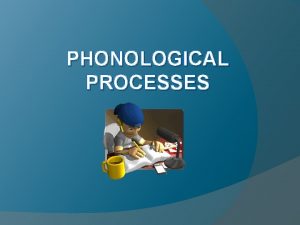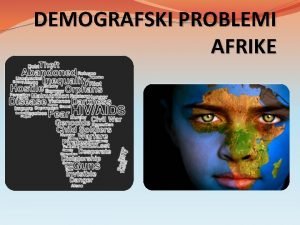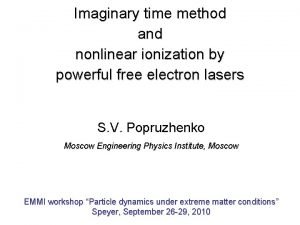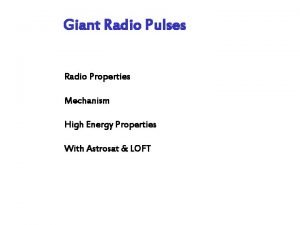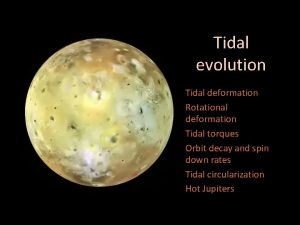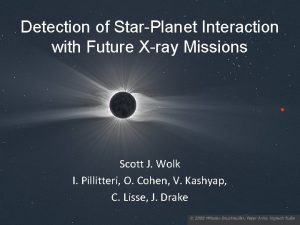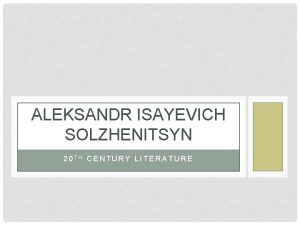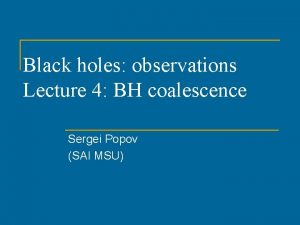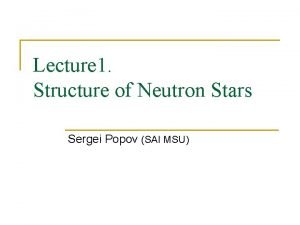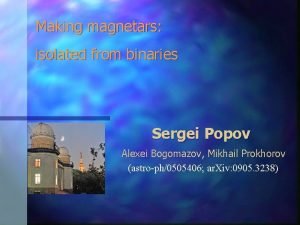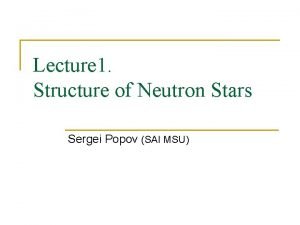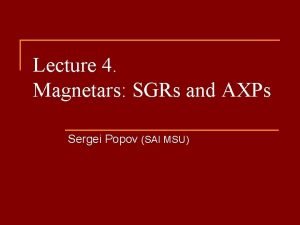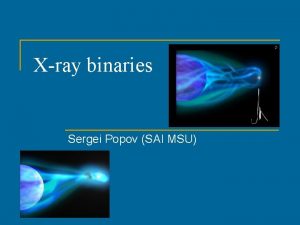Starplanet coalescence SERGEI POPOV ALEKSANDR POPKOV Tidal interaction
















- Slides: 16

Star-planet coalescence SERGEI POPOV, ALEKSANDR POPKOV

Tidal interaction

Types of mergers • Stable accretion ρpl<ρ* • Tidal disruptin 1<ρpl/ρ*<5 • Direct impact ρpl>5ρ* Metzger et al. 2012

Direct impact dinamics Metzger et al. 2012

Direct impact luminosity

Estimates by Metzger et al. (2012) Numbers can reach 0. 1 -1 mergers per year!

M-a distribution Initial distribution in a-M plane is taken from population synthesis.

Planetary parameters

Other perameters Disc lifetime Stellar IMF Galactic star formation rate

Tidal evolution

Results-1 Probability of a merger of a planet with a main sequence host star vs. system's age, p(t). Line style marks the type of merger: solid curve | direct impact, dotted curve | tidal disruption.

Distribution of stellar masses for mergers Distribution of mergers with main sequence stars. Curves show fraction of merging planets depending on the host mass (given in solar units). Only coalescences which happened at ages less than the age of the Galaxy are taken into account. Solid line - direct impacts, dotted line - tidal disruptions, dashedline - stable accretion events.

Which planets merge? Mass and initial orbital radius of planets which merge with their host stars during the main sequence phase in simultaneously formed population of planetary systems. Symbol style marks the type of mergers: dots - direct impacts, circles – tidal disruptions, triangles - stable accretion events. Only mergers happening at ages less than the age of the Galaxy are included. Total number of planets in the population is 105, the number of planets on this diagram is 269.

Luminosity distribution of mergers Distribution in luminosity of planet-star mergers in a Milky Way-like galaxy. Type of merger is marked by hatching. The quantity on the ordinate is the rate of mergers per year per galaxy in a luminosity bin.

Dependences Illustration of the dependence of coalescence statistics on initial distribution in the a-M plane. Symbols encode host star masses: Circles: 0. 09 -1 Msolar; triangles: 1 -1. 5 Msolar; crosses: 1. 5 -4 Msolar; dots: 4 -7 Msolar; stars: 7 -14 Msolar. Inclined lines mark the boundary of the “fall region" for stars of different masses (labeled in the legend in units of the Solar mass). The solid line on the top corresponds to 1 Msolar. Maximum radii of stars of 7 and 14 Msolar at the end of their evolution on the main sequence are plotted by vertical dashed lines and marked by the value of mass.

 Tabel nilai hlb
Tabel nilai hlb Applications of smaw
Applications of smaw Linking vowel to vowel examples
Linking vowel to vowel examples Aleksandr kantonistov
Aleksandr kantonistov Aleksandr miina
Aleksandr miina Alexander nikolaevich averin
Alexander nikolaevich averin Aleksandr kostjukevits
Aleksandr kostjukevits Andrew popov
Andrew popov Jurij popov
Jurij popov Aleksa popov
Aleksa popov Future dmitry
Future dmitry Imaginary time
Imaginary time Tamara popov
Tamara popov Popov
Popov Sergei korolev
Sergei korolev Sergei naryškin
Sergei naryškin What of this goldfish would you wish theme
What of this goldfish would you wish theme


